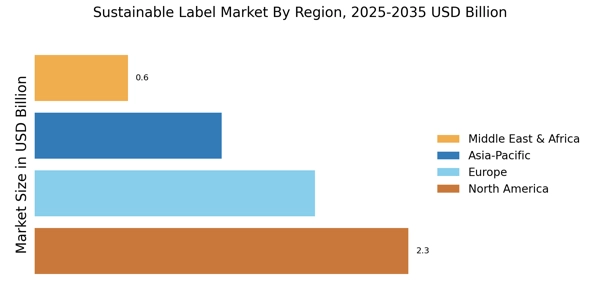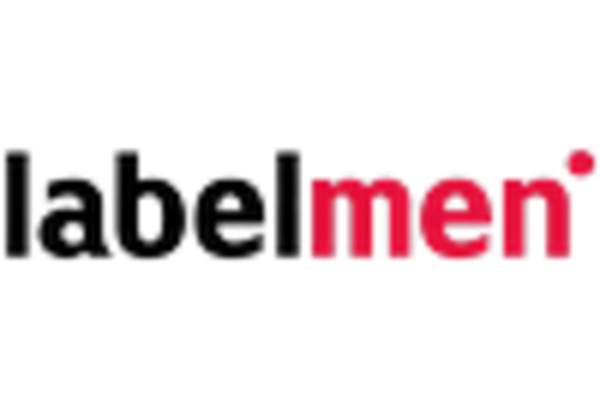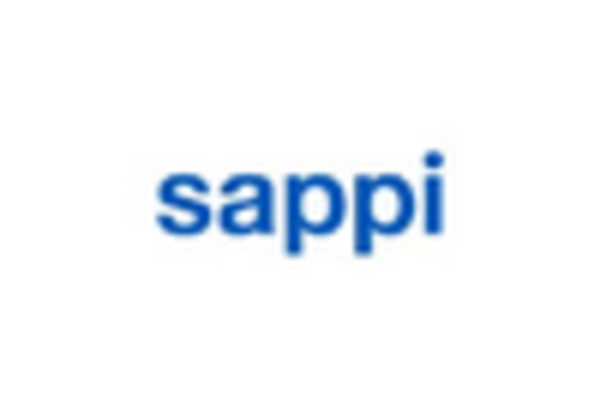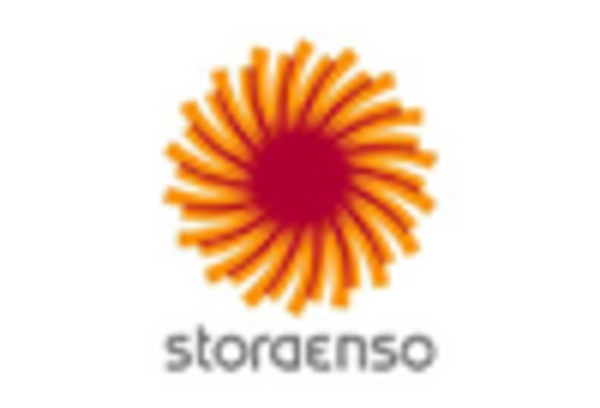Evolving Regulatory Frameworks
The Sustainable Label Market is also being shaped by evolving regulatory frameworks that promote sustainable practices. Governments across various regions are enacting legislation aimed at reducing waste and encouraging the use of sustainable materials. For example, regulations mandating clear labeling of recyclable materials are becoming more prevalent. This regulatory support not only fosters a more sustainable environment but also compels manufacturers to adopt sustainable labeling practices. As compliance with these regulations becomes essential, the Sustainable Label Market is expected to witness growth, as companies seek to align their products with legal requirements and consumer expectations.
Rising Environmental Awareness
The Sustainable Label Market is experiencing a notable surge in consumer awareness regarding environmental issues. As individuals become increasingly cognizant of the ecological impact of their purchasing decisions, they are gravitating towards products that feature sustainable labels. This trend is reflected in market data, which indicates that approximately 70% of consumers are willing to pay a premium for products that are environmentally friendly. Consequently, brands are compelled to adopt sustainable labeling practices to meet this growing demand, thereby driving the expansion of the Sustainable Label Market. Companies that prioritize sustainability in their labeling strategies are likely to enhance their brand loyalty and attract a more conscientious consumer base.
Corporate Sustainability Initiatives
In recent years, numerous corporations have integrated sustainability into their core business strategies, significantly influencing the Sustainable Label Market. Many companies are setting ambitious sustainability goals, such as reducing carbon footprints and utilizing eco-friendly materials. This shift is not merely a trend; it is becoming a fundamental aspect of corporate identity. For instance, a report indicates that over 60% of Fortune 500 companies have adopted sustainability initiatives, which often include the implementation of sustainable labeling. As these corporations strive to communicate their commitment to sustainability, the demand for innovative labeling solutions that reflect these values is likely to increase, thereby propelling the Sustainable Label Market forward.
Technological Innovations in Labeling
Technological advancements are playing a pivotal role in the evolution of the Sustainable Label Market. Innovations such as digital printing, smart labels, and biodegradable materials are transforming how labels are produced and utilized. These technologies enable manufacturers to create labels that are not only sustainable but also enhance consumer engagement through interactive features. For instance, smart labels can provide consumers with information about the product's sustainability credentials via QR codes. As these technologies become more accessible and affordable, they are likely to drive the growth of the Sustainable Label Market, allowing brands to differentiate themselves in a competitive marketplace.
Consumer Preference for Ethical Brands
The Sustainable Label Market is significantly influenced by a growing consumer preference for ethical brands. As consumers increasingly prioritize ethical considerations in their purchasing decisions, they are more likely to choose products that are labeled as sustainable. Market Research Future suggests that nearly 65% of consumers actively seek out brands that demonstrate social responsibility. This shift in consumer behavior is prompting companies to adopt sustainable labeling practices as a means of aligning with consumer values. By effectively communicating their commitment to ethical practices through sustainable labels, brands can enhance their market position and appeal to a broader audience, thereby driving growth in the Sustainable Label Market.


















Leave a Comment